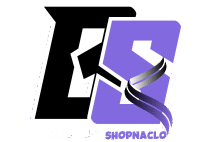New Advances in Concussion Treatment: What Patients and Caregivers Should Know
What is a Concussion and Why Is Treatment Evolving?
A concussion, commonly called a mild traumatic brain injury, occurs when a blow, jolt, or impact causes the brain to rush back and forth inside the skull. Even a seemingly minor accident or sports collision can set off a cascade of neurological changes, leading to headaches, dizziness, confusion, or difficulty concentrating. Historically, concussions were often underestimated. But over the past two decades, mounting research has revealed that even “mild” brain injuries can significantly disrupt daily life, academic performance, and career trajectories. This has resulted in a shift among healthcare providers and researchers towards more specialized, research-driven concussion treatment approaches that move well beyond the old advice of “just get some rest.”
Evolving treatment strategies reflect how differently individual brains respond to trauma. For one person, symptoms might resolve in a matter of days, while for another, issues like brain fog, irritability, or sleep problems can linger for weeks or months. The gold standard now rests on offering personalized care, acknowledging that age, activity level, past concussion history, and even genetics influence recovery. Medical teams are thus urged to guide patients and caregivers through symptom monitoring, gradual reintroduction of physical and cognitive activities, and active involvement in rehabilitation. Recently, there has been particular emphasis on early assessment and intervention, as timely care can reduce the risk of long-term effects, especially in young athletes and students.
Recognizing Concussion Symptoms Early
One of the most challenging aspects of concussion care is spotting the signs promptly, because the onset of symptoms can be delayed and often subtle. While some people may appear “fine” immediately after an injury, others later report escalating headaches, sensitivity to light or noise, fatigue, or a noticeable change in mood—sometimes described as “not feeling like themselves.” In children and teens, symptoms may include trouble recalling new information, irritability, clumsiness, or a loss of interest in favorite toys or activities. Early recognition is critical, as research shows that prompt action, such as removing an athlete from play, can significantly reduce the likelihood of a second injury or longer-lasting symptoms. The CDC offers a clear and concise concussion symptom checklist covering physical, cognitive, and emotional warning signs to assist families, coaches, and teachers. Keeping a daily symptom journal or using digital tracking apps can help identify subtle trends and patterns that are otherwise easy to overlook in the fog of recovery.
Assessment and Diagnosis: Beyond the Basics
Gone are the days when concussion diagnosis relied only on a hurried sideline evaluation. Today, accurate assessment involves multiple tools and perspectives. In addition to a thorough medical history and physical examination, professionals often use standardized screening tools, computerized neurocognitive tests, ocular motor assessments (tracking eye movement and response), and detailed balance evaluations. These modern tests are especially valuable because symptoms like attention lapses or slowed reaction time may not be visible to the untrained eye, yet can have a significant impact on academic or work performance. Some clinics also integrate advanced imaging or blood biomarkers to help clarify unclear or complex cases, especially when symptoms persist. Ultimately, these diagnostic advances provide a more precise understanding of what areas of the brain are impacted, so that each patient receives targeted, tailored care.
Current Best Practices for Concussion Recovery
Contemporary concussion recovery has moved away from the “rest in a dark room for days” philosophy. Instead, science now supports a carefully balanced approach. Experts recommend an initial rest period—typically 24 to 48 hours—to allow the brain to begin healing. However, after this phase, patients are gently encouraged to reengage in daily activities, provided symptoms do not worsen. Light physical activity, such as walking or gentle stretching, is introduced first, followed by cognitive activities like reading, homework, or screen time under monitored conditions. If symptoms spike, activity is scaled back. Standard best practices include:
- Physical Rest: Prioritized immediately after injury, but extended inactivity is discouraged since it may prolong recovery.
- Cognitive Rest: Temporary limits on activities like texting, video games, or intense studying if these aggravate symptoms; this is usually short-term.
- Return-to-Activity Protocol: A stepwise plan that transitions from light activity to full participation in school or work, with regular symptom checks at each stage.
- Team Approach: Communication among healthcare providers, educators, employers, and families ensures that the patient gets the accommodations and support needed to succeed throughout recovery.
For young people, returning to school with a flexible schedule and modified assignments can mitigate stress and reduce setbacks. Ongoing research underscores the importance of avoiding “too much too soon ” and the risks of prolonged withdrawal from daily life.
Emerging Therapies: What’s New in Concussion Treatment?
Rapid advances in therapy methodologies and medical technology are propelling the evolution in concussion care. One area showing significant promise is vestibular rehabilitation—a series of exercises and therapies designed to stabilize balance and visual tracking, which is especially helpful in cases where dizziness or vertigo persists. Vision therapy, often guided by neuro-optometrists, specifically targets eye coordination and focusing difficulties, affecting everything from reading to driving. Cognitive rehabilitation, meanwhile, incorporates interactive memory games and attention drills, often digitized into engaging apps.
Technology is also playing an increasing role. Sensors embedded in helmets and mouthguards can now measure impact forces in real time, delivering instant feedback to trainers and medical staff. Telehealth options bring expert concussion care to remote areas, allowing consistent progress monitoring without the need for frequent in-person visits. According to findings published by JAMA Neurology, targeted interventions incorporating these new tools in the early days of recovery significantly reduce symptom duration and help prevent complications.
Role of Education and Support for Families
Education is power when it comes to concussion care. When patients and families are armed with knowledge about concussion symptoms, red flags, and the expected timeline of recovery, they are much better positioned to advocate effectively and avoid re-injury. Schools, employers, and sports organizations increasingly invest in educational workshops, distributed care guidelines, and “return-to-learn” or “return-to-play” protocols. This approach encourages collaboration among all stakeholders to create a recovery environment with appropriate accommodations and support. For example, educators might allow extra time on tests while employers could offer temporary remote work or lighter schedules. Emotional support is equally important, as many patients—especially young athletes—may feel isolated or frustrated during recovery. Consistent communication, reassurance, and updates about progress can significantly enhance morale and drive better outcomes.
Prevention and Technology in Reducing Risk
Prevention plays an ever-growing role in reducing not only the number but also the severity of concussions. Helmet and equipment technology advances are unbeaten in athletic settings, combining state-of-the-art materials and shock-absorbing designs. Rule changes—limiting full-contact drills in youth football to requiring baseline testing before the season—have also made organized sports safer. Schools and leagues now encourage an open culture where players are praised for speaking up about symptoms, not pressured to “tough it out.” Mobile apps and digital tools help coaches and parents assess risk after a blow to the head and guide return-to-play decisions.
Across all environments—from playgrounds to workplaces—public education remains vital. Posters, training sessions, and health class curriculum updates have raised awareness, so that more people than ever know the signs to watch for and act promptly when head trauma occurs. Minor lifestyle modifications, such as using handrails or eliminating tripping hazards at home, can also reduce the chance of non-sport-related concussions, especially in older adults.
The Future of Concussion Care
The future holds remarkable promise for anyone affected by concussions. Researchers are making strides in identifying biomarkers that indicate injury severity and predict recovery time, paving the way for testing that could be as simple as a blood draw or saliva sample. Advanced brain imaging techniques, including diffusion tensor imaging, give scientists a clearer look at underlying changes in brain structure post-injury. At the same time, artificial intelligence helps clinicians recognize subtle patterns that even experienced eyes may miss.
Most importantly, the ongoing commitment to public education and multidisciplinary care ensures that patients and families today have more support, information, and hope than ever before. As new advancements emerge and treatment becomes even more tailored, a proactive and informed approach will shape the best possible outcomes for people navigating concussion recovery.



